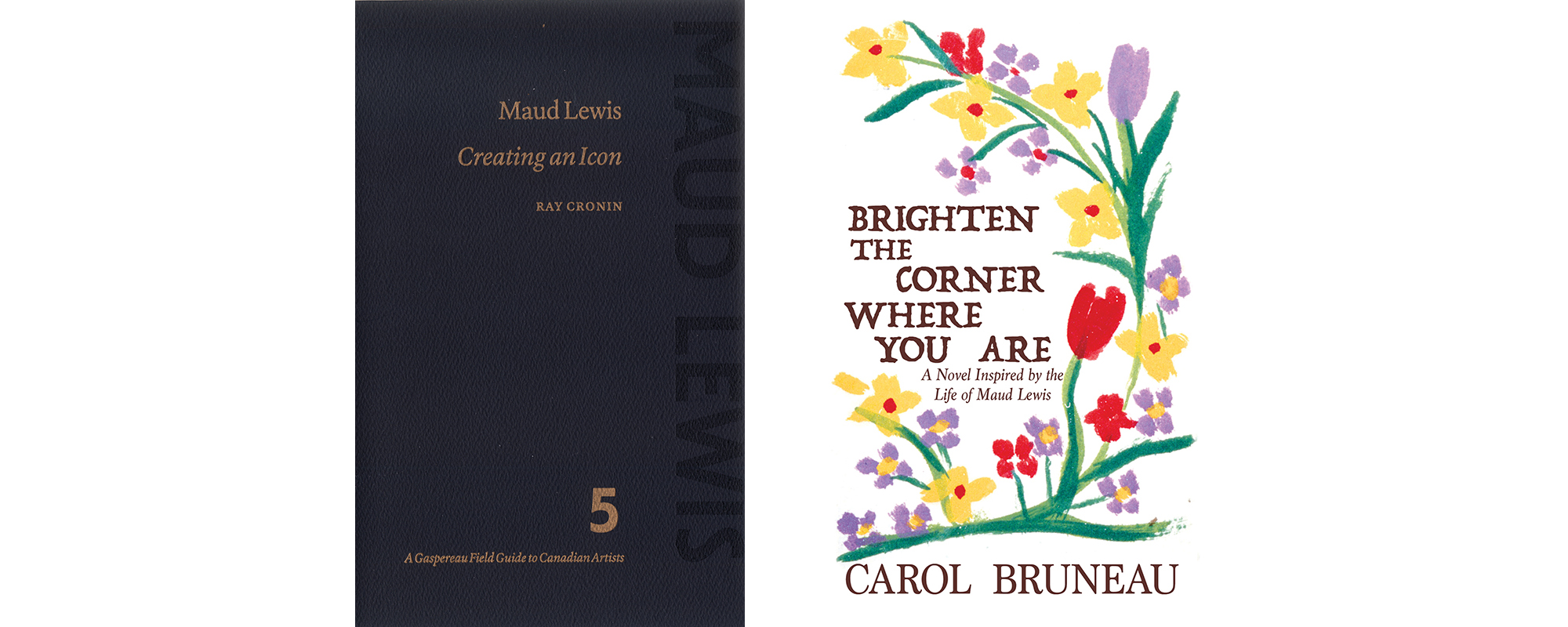
Maud Lewis did not set out to become Nova Scotia’s most famous folk artist, but the rise of her profile did coincide with the province’s efforts to market an idyllic image to the rest of the world. Lewis’s bright, cheerful miniature paintings depicting life in rural southwestern Nova Scotia first became popular souvenirs in the 1940s when tourists would drive up the local highway to purchase her work for a couple bucks a piece. (The originals are now worth tens of thousands of dollars.) After a story about her appeared in the Toronto Star Weekly in 1964, Lewis – a diminutive woman who was born with congenital disorders and whose severe rheumatoid arthritis in her hands made painting an increasingly painful challenge – became just as much an attraction as her work. Also of interest was her tiny, painted one-room cabin, which she shared with her husband Everett, a volatile alcoholic who controlled every aspect of her life, especially money.
Today, Lewis’s colourful scenes of animals, boats, flowers, and farms grace tote bags, socks, keychains, and even plush toys. She has been the subject of theatre productions, books, and, most recently, the feature film Maudie. Despite this mini-industry, there are stories left to tell as witnessed in two new titles that add dimension and humanity to her story.
As an impoverished disabled woman without formal training who painted on whatever materials she could scrounge up, Lewis rarely received critical examination of her work. In Maud Lewis: Creating an Icon, the latest edition of Gaspereau Press’s Field Guide to Canadian Art essay series, writer and curator Ray Cronin offers an excellent introduction to Lewis’s work within the context of how her contributions to Nova Scotia’s art history intersected with what is essentially the province’s brand identity.
Cronin brings unique insight to his fourth title in the series, which all feature full-colour plates and Gaspereau’s classic letterpress jackets. As a longtime art writer for various publications – including books on Lewis and Nova Scotian folk art for Nimbus Publishing – Cronin is skilled at explaining artistic concepts to a general audience. As a former CEO at the Art Gallery of Nova Scotia, he became responsible for preserving Lewis’s tiny cabin, now housed inside the provincial art museum. Maud Lewis: Creating an Icon also references publications by his predecessors, former AGNS heads Bernard Riordan and the late Jeffrey Spalding, which reinforces this sense of Lewis’s institutional importance.
Cronin acknowledges the thematic role that nostalgia plays in Lewis’s work and how the popular narrative about her life was also imbued with romanticism. But that perspective changed following her death in 1970 at age 67, when she began to be perceived as a victim of exploitation. In the essay’s concluding paragraphs, Cronin suggests that her story has much in common with that of Marilyn Monroe – another tragic life tightly intertwined with legend – which may leave readers with unanswered questions outside the scope of the book. It would be interesting, for example, to get insight from an artist or critic with a disability as to how Lewis was treated in arts media.
What would Lewis have made of Cronin’s assessment? Did she paint cheery scenes to cover pain? Was she as manipulated by her husband as many now believe?
Lewis didn’t leave behind a diary, but readers of Carol Bruneau’s wonderful new novel, Brighten the Corner Where You Are, will feel kinship as if sitting across the table enjoying a lively conversation with Lewis over a long cup of tea. It is a testament to Bruneau’s talents that this fictionalization of the artist’s life draws out Lewis’s inner thoughts, especially considering that the story is told from the afterworld.
It’s a premise that could go terribly wrong, but in Bruneau’s talented hands, the story becomes a fully realized narrative that doesn’t require knowledge of Lewis’s work. In the manner of Alice Sebold’s 2002 bestseller, The Lovely Bones, Bruneau has created a first-person structure in which her protagonist reflects on her past and on events in the world after her death. It allows for amusing moments, like Lewis in heaven pondering Led Zeppelin’s new song “Stairway to Heaven.” The approach also allows the character to address her posthumous fame and misconceptions about her marriage.
Lewis is presented as a woman of strength and sass, a chain-smoker who detested being seen as a victim (even when she clearly was), and who desired romance and simple pleasures. But perhaps most importantly, it is clear that Bruneau respects Lewis as an artist and a human. Brighten the Corner Where You Are is a welcome addition to the Lewis legacy.
 Contact us via email
Contact us via email

